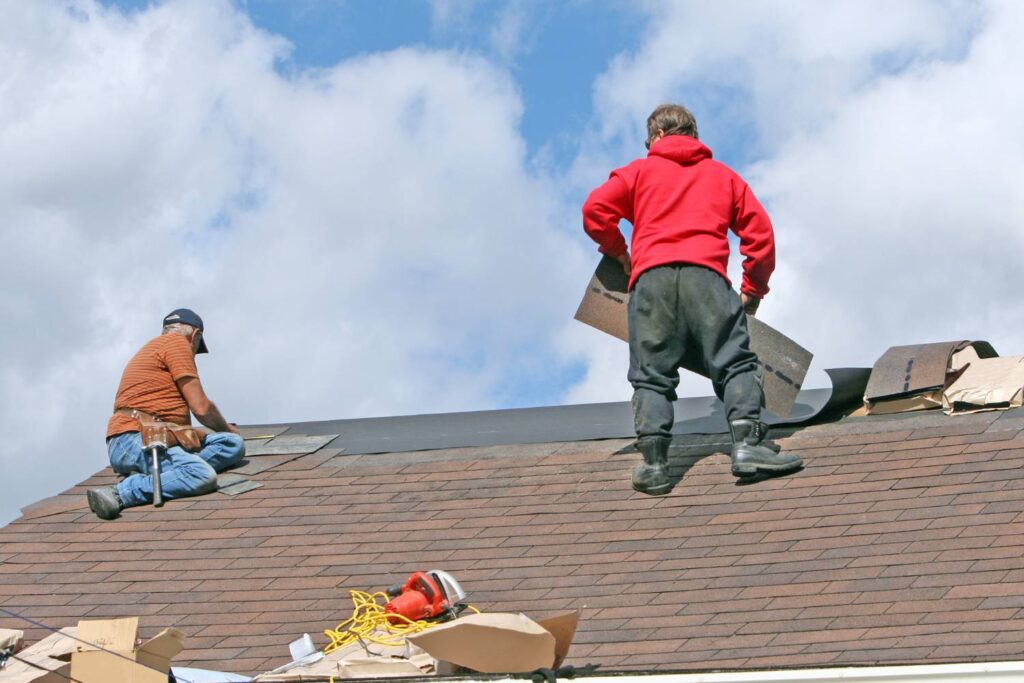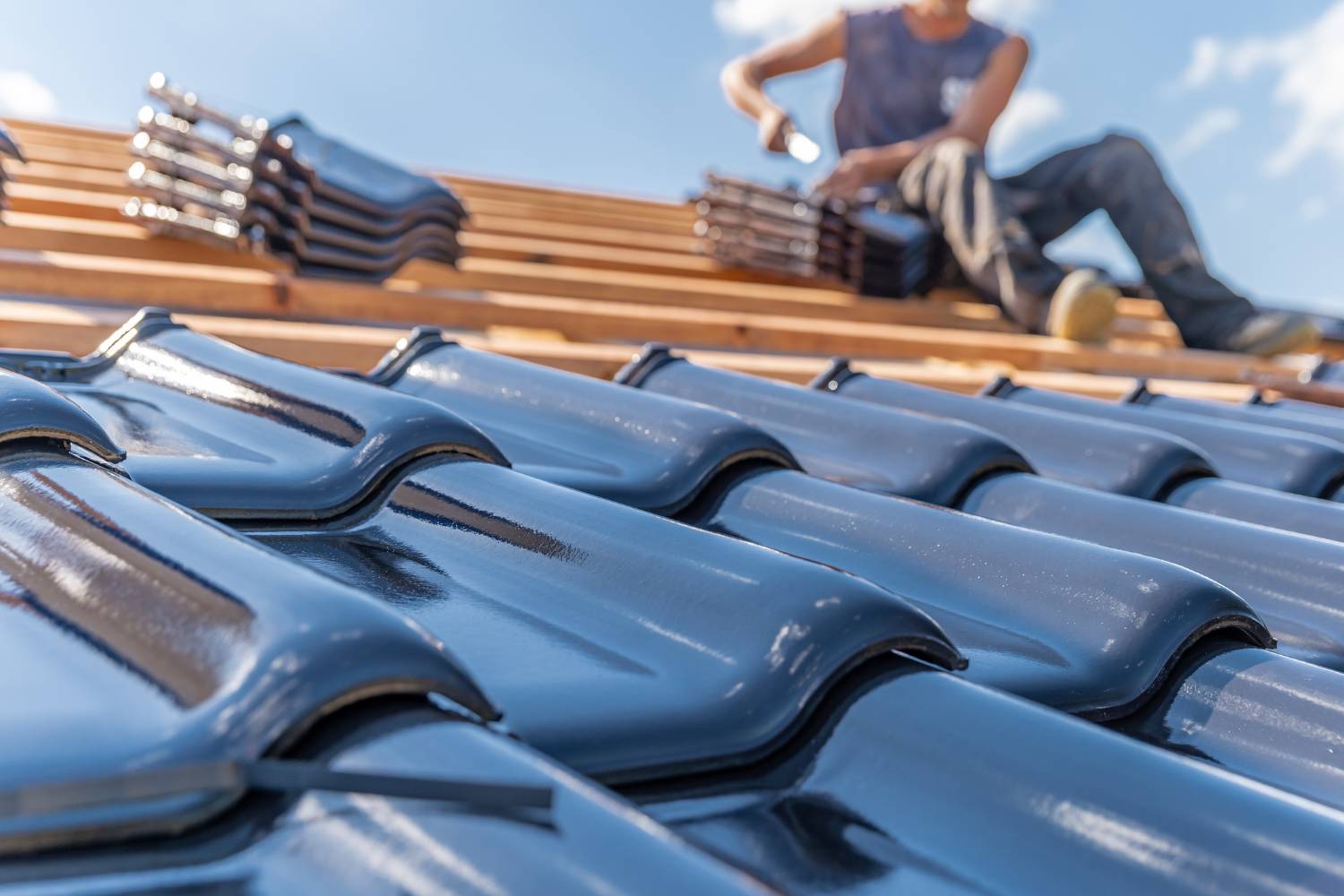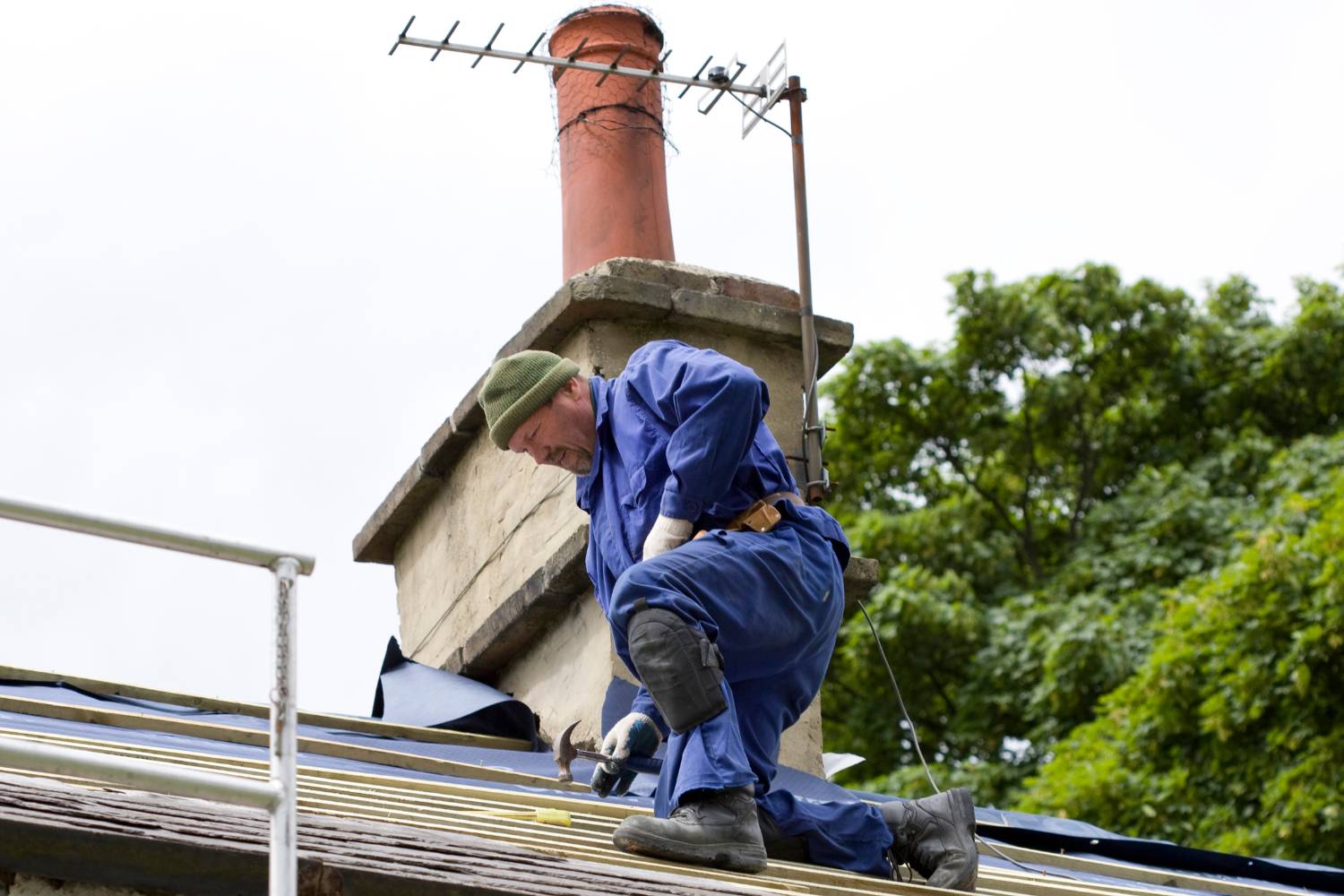Undertaking a roof restoration project is a significant endeavour that can greatly improve the durability and appearance of your home. However, to ensure the process goes smoothly, meticulous planning and thorough preparation are essential.
From identifying your roof type and understanding the local climate to selecting the right contractor and readying both the interior and exterior of your home, each step is vital.
Let’s explore a detailed guide on how to efficiently prepare your home for a roof restoration project, guaranteeing a seamless and successful outcome.
What Should You Do Before The Roof Restoration Begins?
Roof restoration is a significant investment in your home’s longevity and aesthetics. Ensuring the process goes smoothly requires careful preparation and informed decision-making. Here are some essential steps to take before beginning a roof restoration project:
Assess Your Roof Type
First, it is crucial to identify the material of your roof, whether it is made of tiles, metal sheets, Colorbond, or another material, as each type requires specific restoration methods. In Australia, some of the common roof types include gable roofs, which are simple and good for ventilation and drainage; hip roofs, which are stable in high winds and provide additional attic space; flat roofs, which are ideal for solar panels and rooftop gardens; skillion roofs, which are popular for modern homes with a minimalist design; and curved roofs, which offer a unique and striking design made from various materials.
Understand Your Local Climate
Understanding the climate in your area is essential for choosing the right materials and techniques for your roof restoration. In tropical climates, such as Northern Queensland and the Northern Territory, roofs are exposed to high humidity and rainfall, so choosing corrosion-resistant materials and ensuring good ventilation is vital. In arid climates like Central Australia, high temperatures and UV radiation can cause roofing materials to deteriorate quickly, so UV-resistant materials and regular inspections are necessary.
Coastal climates, such as those in Sydney and Melbourne, expose roofs to salt spray and high winds, requiring rust-resistant materials. Temperate climates, like those in Adelaide and Perth, experience varied weather conditions, so durable materials that can withstand different weather types are recommended.
Choose The Right Timing
The timing of your roof restoration project can significantly impact its success. It is advisable to avoid starting the project during rainy or windy seasons to prevent delays and complications. Planning for potential weather-related interruptions can help ensure the project runs smoothly.
Research And Choose A Reliable Contractor
Choosing the right contractor is crucial for a successful roof restoration. Look for contractors with extensive experience and a proven track record. Checking online reviews and asking for references can provide insight into their reliability. Ensuring the contractor is licensed and insured protects against accidents or damages.
Additionally, obtaining detailed quotes from several contractors, which include the scope of work, cost breakdown, timeline, warranty, payment terms, and additional services, allows for better comparison and informed decision-making.
Discuss Details With Your Tradesman
Effective communication with your tradesman is essential before beginning any work on your roof. Ensure you fully understand the entire restoration process, ask any questions, and address any concerns. Knowing what to expect at each stage helps in managing the project smoothly and ensures that you are aware of the progress and any potential issues.
Check Local Regulations
Before commencing the project, verify that all necessary permits and approvals from local authorities are in place. Different regions may have specific regulations regarding roofing projects, and ensuring compliance can prevent legal issues and delays.
How Can You Protect Your Home’s Interior?
Protecting your home's interior from unexpected damages and during maintenance work such as roof replacements requires careful planning and proactive measures. Here are several strategies to ensure your home's interior remains safe and intact.
Covering Your Attic
During a roof replacement project, expect a certain level of messiness. Dust, debris, and even wood splinters may find their way into your attic if it isn't properly shielded. To safeguard your attic belongings, utilise old sheets, drop cloths, or tarps to cover your possessions.
Once the roof replacement concludes, you can easily gather and dispose of the debris-covered coverings, streamlining the clean-up process. If your attic is largely devoid of stored items, you might consider forgoing the protective coverings but be prepared for a potential buildup of dust. A post-replacement vacuuming might be necessary to restore a clean environment in your attic, ensuring a fresh start after the project is completed.
Clear Patio And Deck
As the roof replacement project progresses, debris can accumulate on your patio and deck. To safeguard your valued belongings, it is essential to take a few precautionary measures. If possible, relocate valuable items from these outdoor areas to prevent potential damage.
If moving items isn't feasible, consider utilising protective measures such as tarps and plywood to shield at-risk items like patio furniture, potted plants, and grills from falling debris. Engage in proactive communication with your roofing contractor to inquire about the strategies they plan to employ to safeguard items that couldn't be relocated.
By sharing this information, you enable the roofing crew to identify objects within their work vicinity, facilitating better coordination to ensure both their team and your prized possessions remain unharmed.
Remove Wall Décor
Anticipate some vibrations resulting from the hammering, hand-nailing, and power tool usage during your roof replacement project. These vibrations can reverberate through your home's walls, potentially causing items hanging on the walls to become dislodged and fall to the floor.
To ensure the safety of your valuable paintings, pictures, and wall decorations, it is advisable to remove any items that appear precarious or susceptible to slipping off due to vibrations. By proactively taking this step before the replacement commences, you prevent potential damage and preserve the condition of your cherished possessions.
Mow Your Lawn
Although your roofer will try to keep their workspace neat and tidy, it is likely that debris will fall on the ground surrounding your home. The clean-up method involves using a magnet three separate times to look for nails and other materials that might have fallen during your replacement. First, the crew will sweep the magnet around the entire perimeter of your home during clean-up on the day of installation.
When they return to double-check the work, the project manager will then do a second sweep around the perimeter of your home. Lastly, the dumpster driver will sweep around the area where the dumpster was placed after he has removed it from your driveway. To make their search as quick and easy as possible, it is helpful to cut your grass short before your replacement begins.
What Exterior Preparations Are Necessary?
Preparing for a roof replacement involves several critical steps to ensure the process runs smoothly and efficiently. Proper preparation protects your property, minimises disruptions, and ensures the safety of everyone involved. Here are the essential exterior preparations necessary before starting a roof replacement.
Clear The Surrounding Area
Before your roofing project begins, it's crucial to clear the area around your home. Remove any outdoor furniture, decorations, and other items that could be damaged during the project. Protect your landscaping and plants by covering them with tarps or plastic sheeting. Additionally, create easy access for contractors and equipment by clearing paths and ensuring there's enough space for vehicles and materials.
Move Vehicles And Cover Valuable Items
To prevent accidental damage and provide room for the roofing team to work, move your cars, bicycles, and other vehicles away from the work area. Items stored in your garage or attic should be covered with tarps or moved to a safer location to protect them from debris and vibrations. If you have a pool, consider covering it to keep out debris during the project.
Establish Communication With Your Contractor
Before the project starts, discuss details, expectations, and any specific concerns with your contractor. Establish a point of contact for questions or concerns and ensure you have their contact information readily available. Maintain an open line of communication throughout the project to address any issues that arise and ensure a smooth process.
Plan For Waste Disposal
Confirm with your contractor the placement and removal of dumpsters, ensuring they're positioned in a convenient location that won't damage your property. Ensure proper disposal of old roofing materials according to local regulations and environmental guidelines. Discuss clean-up procedures with your contractor to ensure your property is left in pristine condition after the project is completed.
Make Arrangements For Children And Pets
Keep children and pets away from the work area to ensure their safety, as construction zones can be dangerous. Consider alternate arrangements, such as playdates or temporary boarding, if necessary. Plan for their comfort during the project by creating a designated space for them to relax away from the noise and commotion.
Tarp Your Garden
Your landscaping deserves as much attention and care as the interior of your home during a roof replacement. Safeguarding your garden and outdoor décor from debris and dust is crucial.
Cover vulnerable areas with materials like tarps or plastic sheets to shield your landscaping from the accumulation of debris and dust. Additionally, consider removing hanging or potted plants temporarily to avoid potential damage from falling materials. Take a thorough inventory of your garden for delicate items that might be susceptible to harm.
Relocate mosaic stepping stones, solar-powered lights, potted plants, statues, wind chimes, water fountains, and birdhouses to a secure spot until the roof replacement is complete. This proactive approach ensures the safety and longevity of your cherished outdoor decorations.
How Do You Communicate With Your Neighbours?
Effective communication with your neighbours is crucial, especially during home renovation projects that can cause disruptions. Here’s how you can ensure a smooth and neighbourly relationship while undertaking such projects.
Communicate Ahead Of Time
One of the most important aspects of being considerate during a renovation is communicating ahead of time. Inform your neighbours about your renovation plans well in advance. Provide an overview of the project, including the expected start and end dates, and any potential disruptions they might experience, such as noise or limited access to shared areas. Discuss the renovation crew’s working hours and schedules to identify and avoid any time-sensitive events your neighbours might have planned.
This helps in minimising disruptions to their lives. Providing your contact information or assigning a specific person on your renovation team as the point of contact for any concerns or questions is also beneficial. Regular updates via email, text messages, or face-to-face conversations about the progress of your renovation demonstrate transparency and allow neighbours to plan accordingly.
If any issues or concerns arise during the renovation, address them immediately by listening to your neighbours’ concerns and working together to find amicable solutions. Prioritising open communication and setting clear expectations creates a more positive and cooperative environment throughout the renovation.
Be Aware Of Noise Levels And Schedules
Being mindful of noise levels and schedules during your home renovation is crucial in minimising disruption to your neighbours’ lives. Establish working hours that align with local regulations and are least likely to disturb the people living around you, avoiding early mornings, late evenings, and weekends when people are more likely to be home.
Inform your neighbours if you anticipate particularly noisy tasks like demolition or drilling, allowing them to prepare and adjust their schedules accordingly. Employ soundproofing materials or barriers to help reduce noise and opt for quieter tools and equipment with noise-reduction features.
Scheduling regular breaks for your construction crew can help keep noise levels down, providing relief for your neighbours and maintaining worker productivity and focus. Regularly assess noise levels during the renovation to ensure they remain within acceptable limits.
Maintain Cleanliness In Your Work Area
Maintaining cleanliness in your work area during a renovation is essential for reducing disruptions and mess in the neighbourhood and ensuring the safety of everyone on the property. Choose the right size skip bins to ensure that all waste and debris are contained and disposed of efficiently, reducing the likelihood of clutter and mess spilling onto neighbouring properties or public spaces. Encourage all workers and visitors to wear appropriate protective clothing to minimise the spread of dirt and debris.
Regularly dispose of waste materials and debris in the designated skip bins and schedule periodic clean-up sessions to keep the work area tidy and organised. Planning for natural disasters, such as storms, to clean up debris and secure the work area ensures your renovation project remains safe and organised.
Offer Neighbourly Favours To Show Appreciation
Offering neighbourly favours is an excellent way to show appreciation for your neighbours’ understanding and patience during your home renovation project. Assist them with outdoor chores like gardening, lawn care, or cleaning gutters. Once your project is complete, clean up any remaining mess or debris that may have spread to their properties.
If you have access to tools, equipment, or materials that your neighbours might need, consider offering to lend or share these resources. Invite them to a casual gathering or barbecue to celebrate the completion of your renovation, providing an opportunity to thank them personally for their support and build camaraderie.
If your neighbours embark on their own renovation projects, offer your assistance or advice based on your experience. These acts of kindness, no matter how small, can help foster goodwill and maintain positive relationships within your community.
Conclusion
Preparing your home for a roof restoration project is a multifaceted process that demands careful attention to detail and proactive planning. By understanding your roof type, assessing your local climate, and selecting a reputable contractor, you set the foundation for a successful project. Furthermore, taking steps to protect both your home’s interior and exterior, as well as maintaining open communication with your neighbours, ensures a smooth and efficient restoration process.
Remember, thorough preparation not only facilitates a seamless project but also safeguards your investment, enhancing your home’s durability and aesthetic appeal. With these comprehensive preparations, you can look forward to a restored roof that not only meets but exceeds your expectations.
Frequently Asked Questions
The first step is to assess your roof type. Identifying the material of your roof, whether it is tiles, metal sheets, Colorbond, or another material, is crucial. Each type requires specific restoration methods, so knowing this helps you and your contractor plan appropriately.
To choose the right contractor, research and select one with extensive experience and a proven track record. Check online reviews, ask for references, and ensure they are licensed and insured. Obtain detailed quotes from several contractors to compare the scope of work, costs, timelines, warranties, and payment terms.
Protecting your home's interior involves several steps, such as covering your attic with old sheets or tarps, removing valuable wall décor to prevent damage from vibrations, and clearing patio and deck areas. Ensure all valuables are covered or moved to avoid potential damage from debris.
Minimising disruptions involves communicating with your neighbours ahead of time about the project’s schedule and potential disturbances. Be mindful of noise levels and work within local regulations. Maintain a clean work area and offer neighbourly favours to show appreciation for their understanding and patience.
Exterior preparations include clearing the area around your home by removing outdoor furniture and decorations, covering landscaping with tarps, moving vehicles away from the work area, and ensuring easy access for contractors. Discuss waste disposal plans with your contractor and ensure children and pets are kept away from the work zone for safety.


